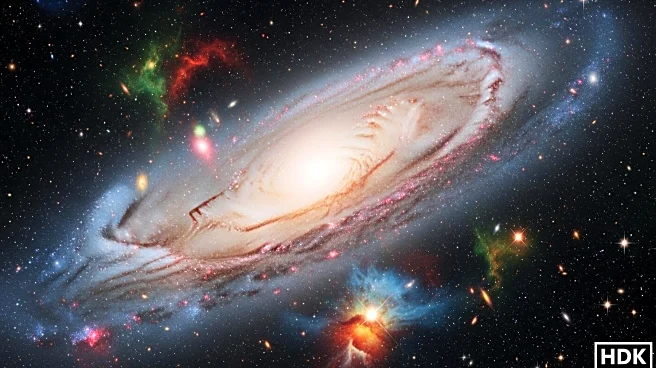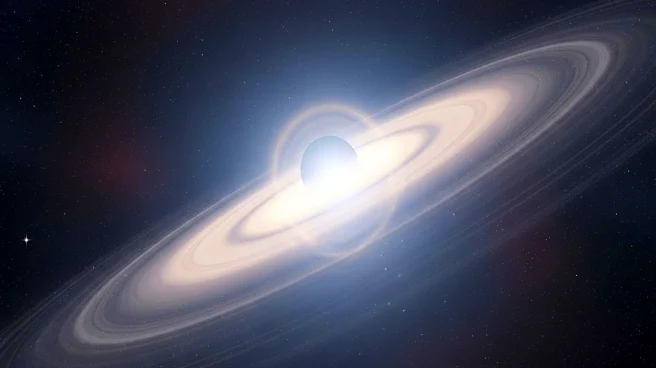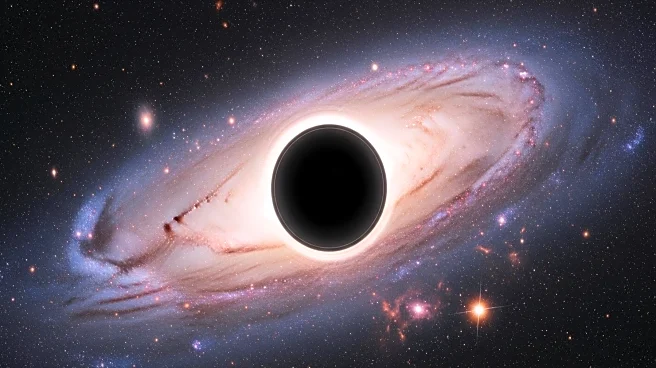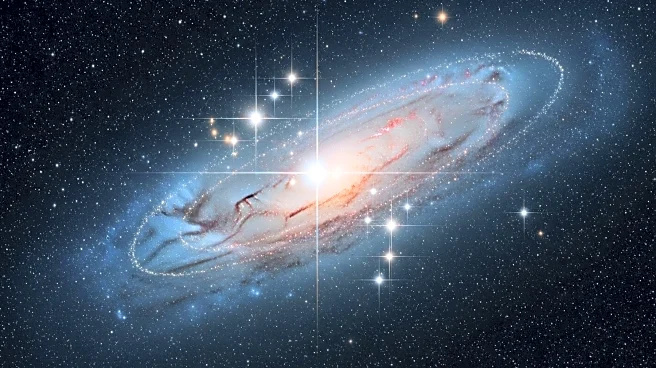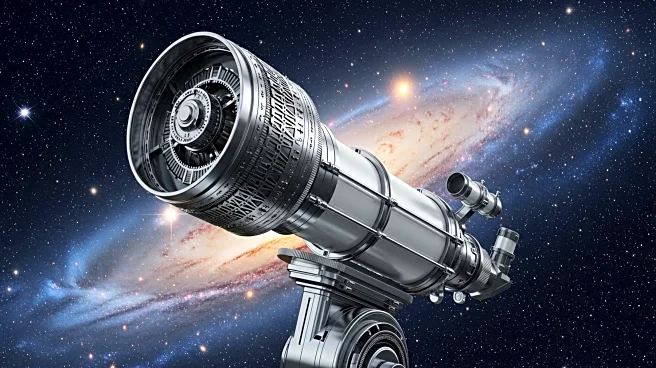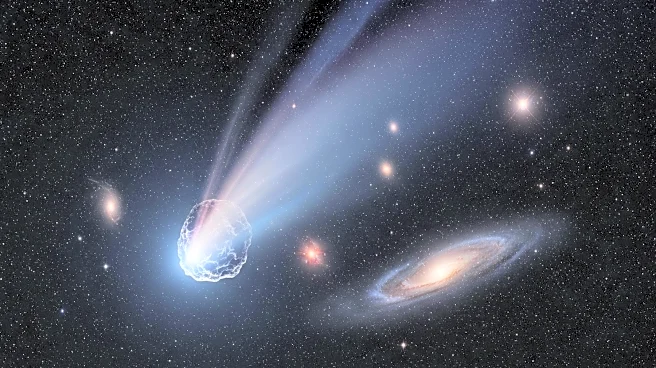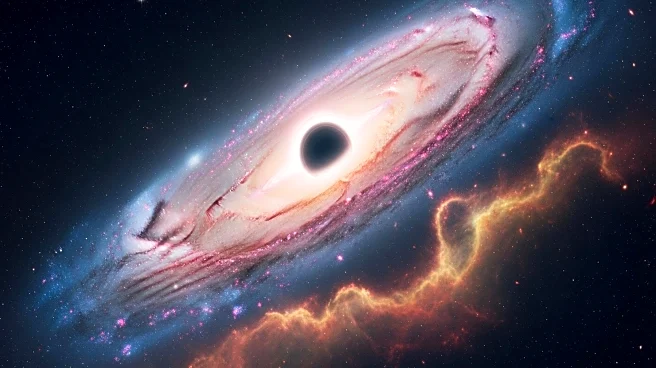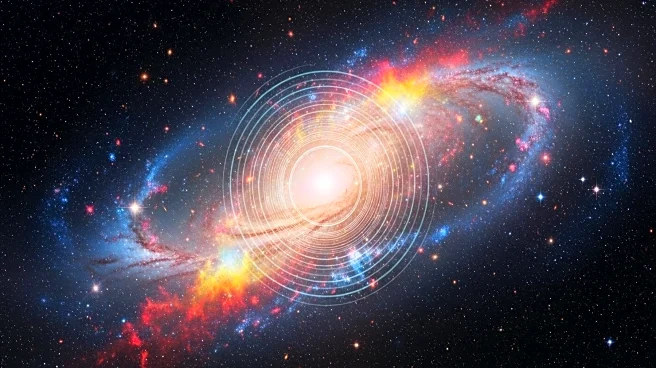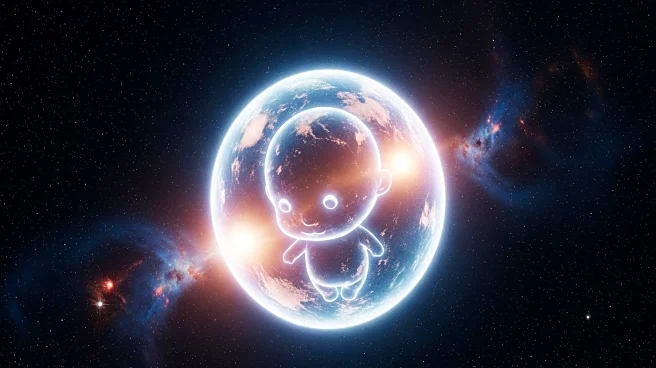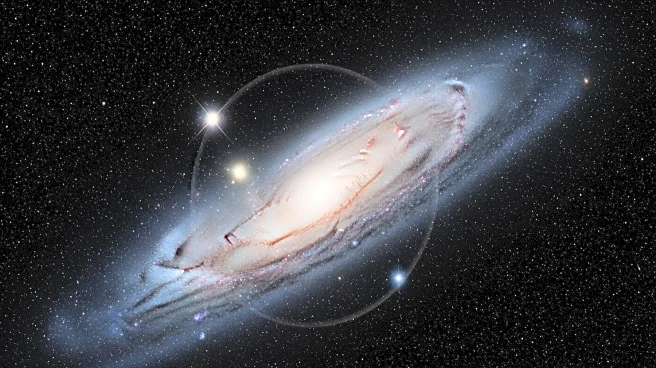What's Happening?
A recent study conducted by astronomers from the University of Southampton and European colleagues has revealed that supermassive black holes may not be as large as previously believed. The research focused on a distant quasar, a bright core of a galaxy over 12 billion light years away, and found that the black hole at its center has a mass of about one billion suns, which is significantly smaller than earlier estimates. The study utilized the Gravity+ instrument at the European Southern Observatory's Very Large Telescope in Chile to analyze the hot gas spiraling into the black hole. The findings suggest that intense radiation is preventing the black hole from gaining mass quickly, challenging existing models of cosmic growth.
Why It's Important?
This discovery has significant implications for our understanding of cosmic evolution and the growth of black holes. It challenges the current models that predict the rapid growth of supermassive black holes in young galaxies shortly after the Big Bang. By revealing that these black holes may be smaller and grow more slowly than previously thought, the study prompts a reevaluation of the methods used to measure black holes and could reshape scientific models of cosmic evolution. This could lead to new insights into the formation and development of galaxies and the role of black holes in the universe.
What's Next?
The findings may lead scientists to reconsider the methods used to measure black holes and reshape models of cosmic evolution. Further research is likely to focus on understanding the mechanisms behind the intense radiation that prevents black holes from gaining mass. Scientists may also explore other distant galaxies to see if similar patterns are observed, which could provide more evidence to support the new model of black hole growth.

